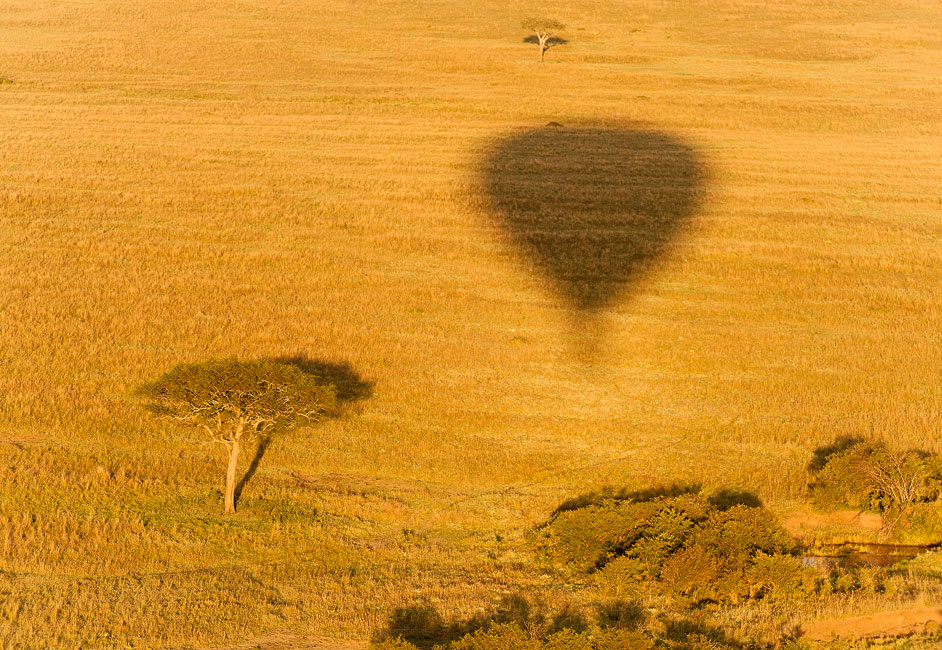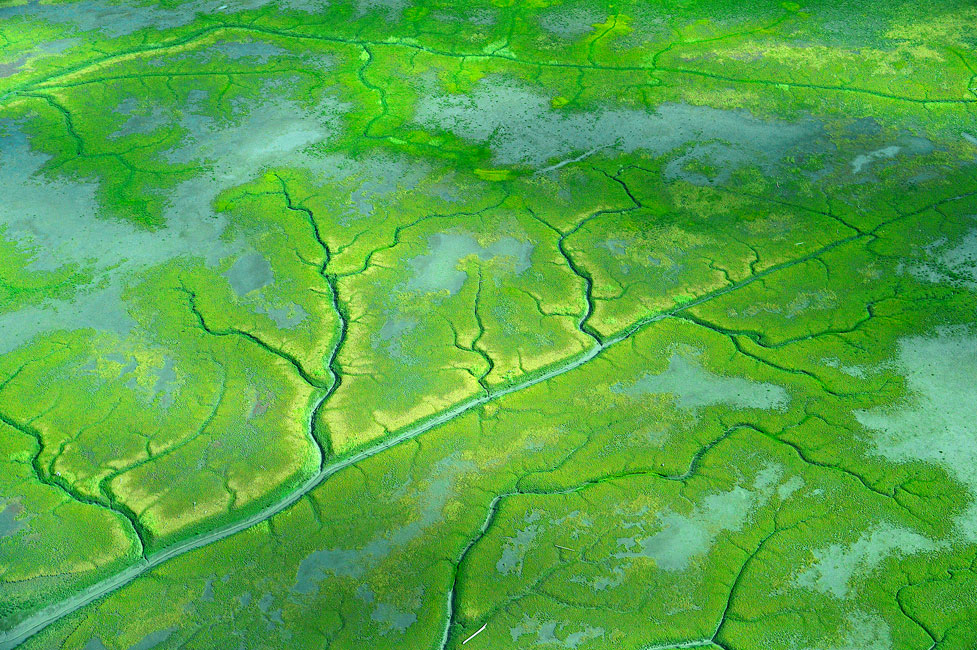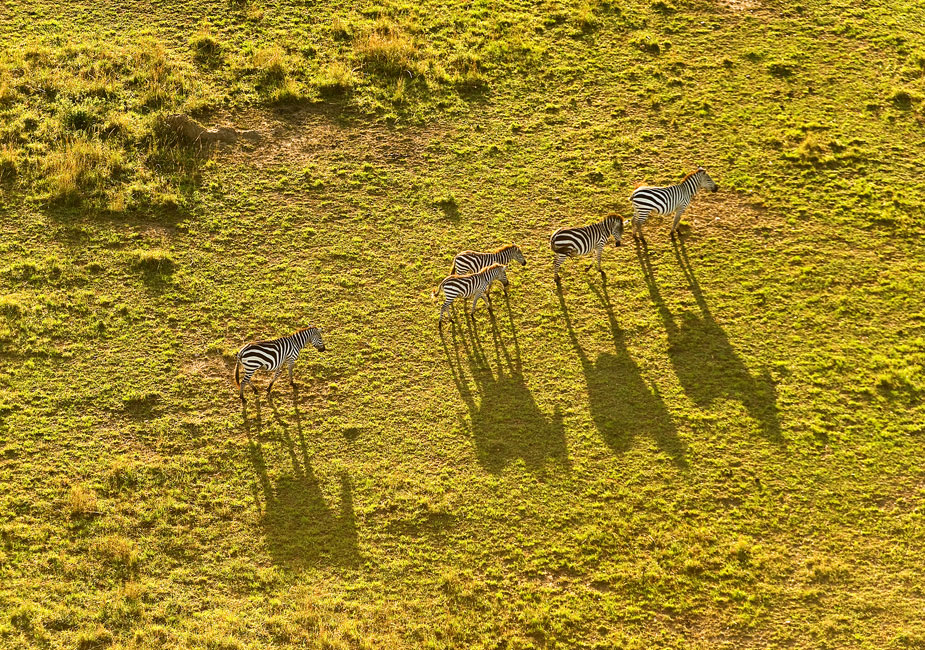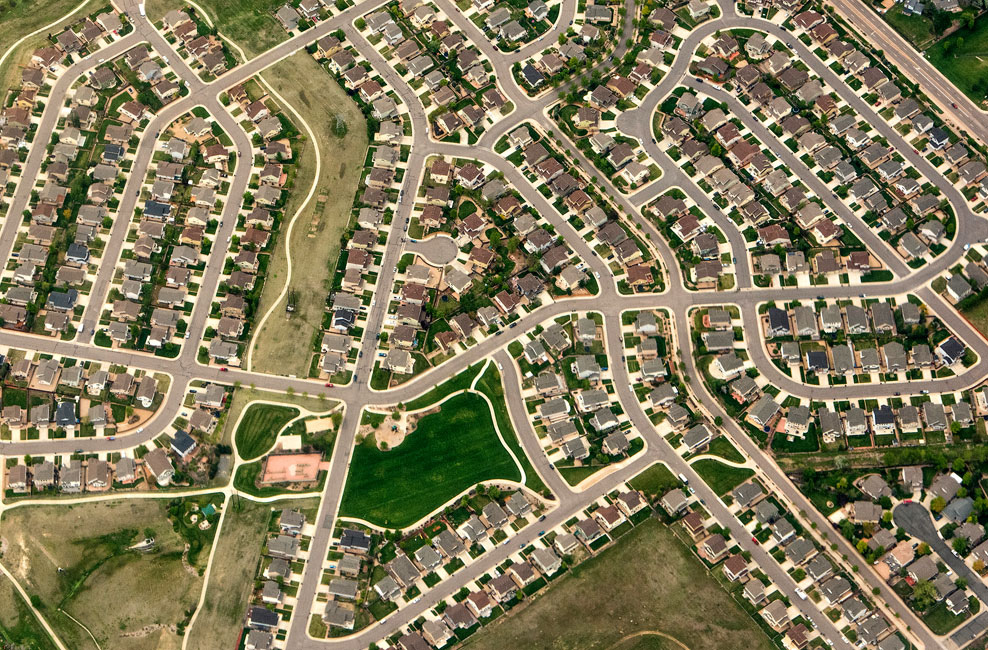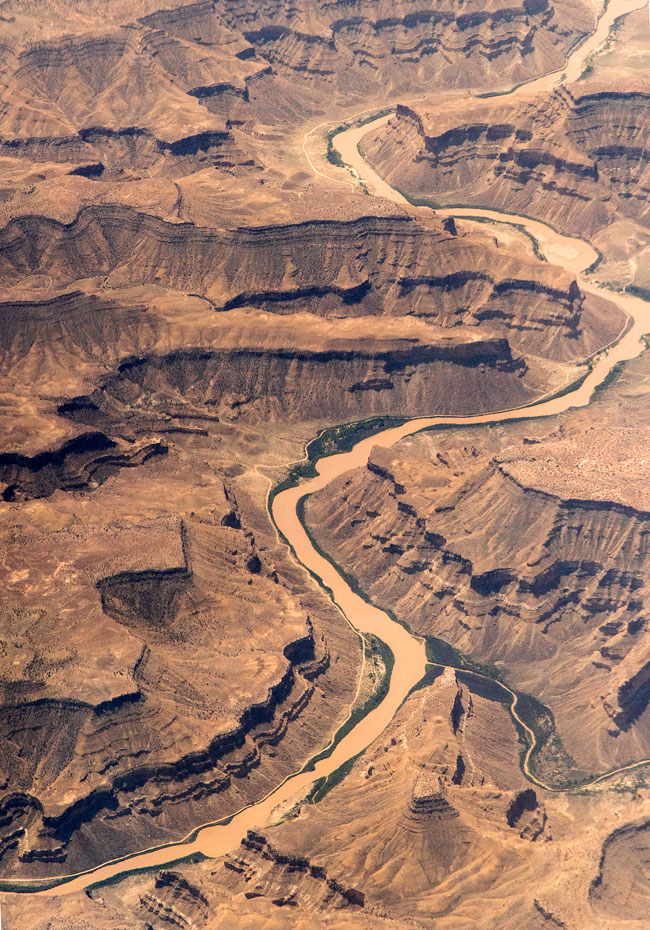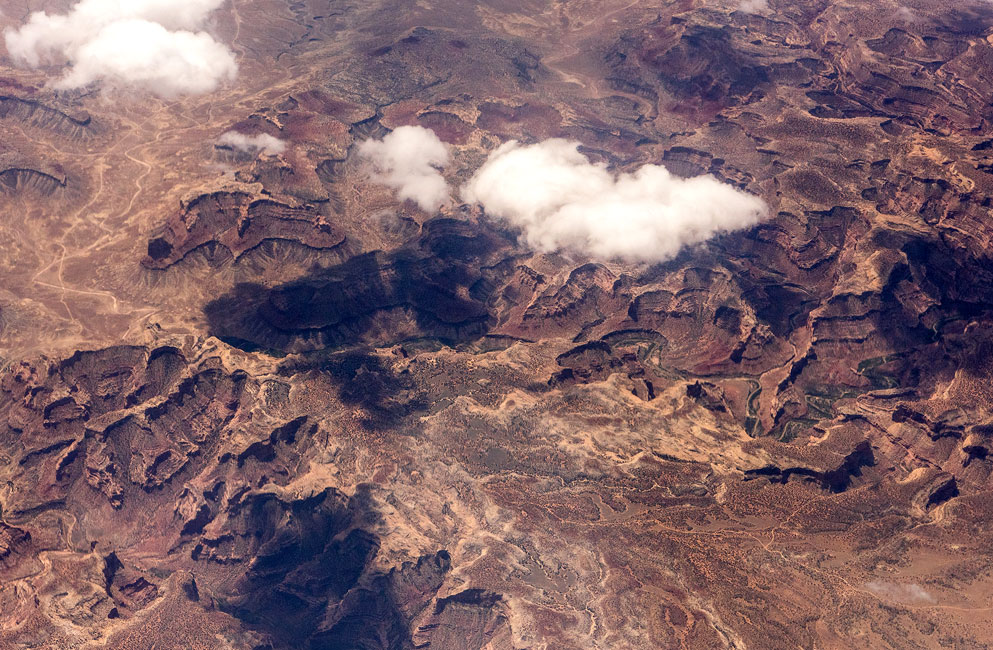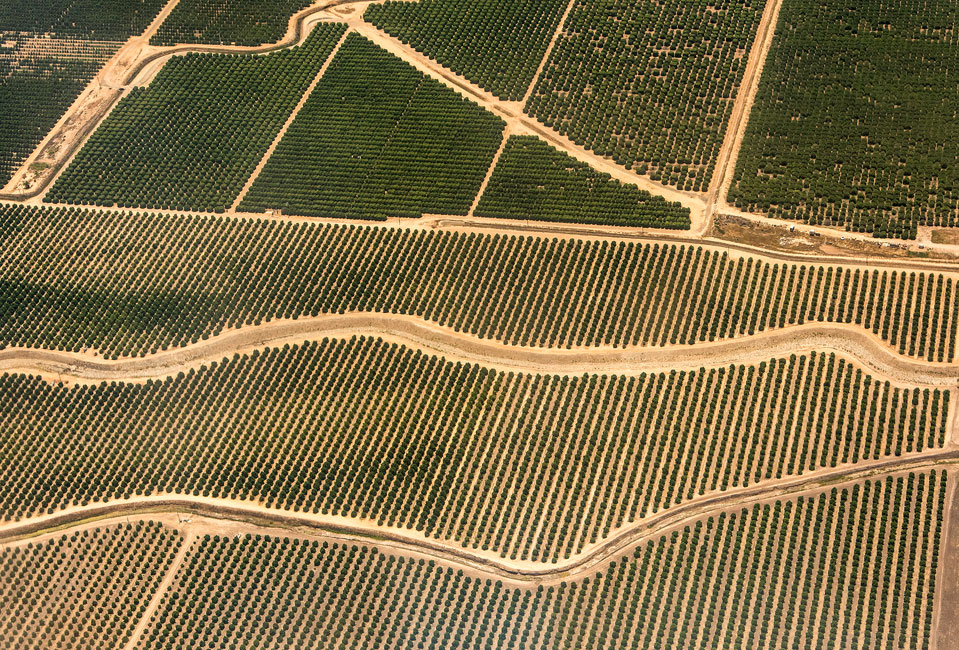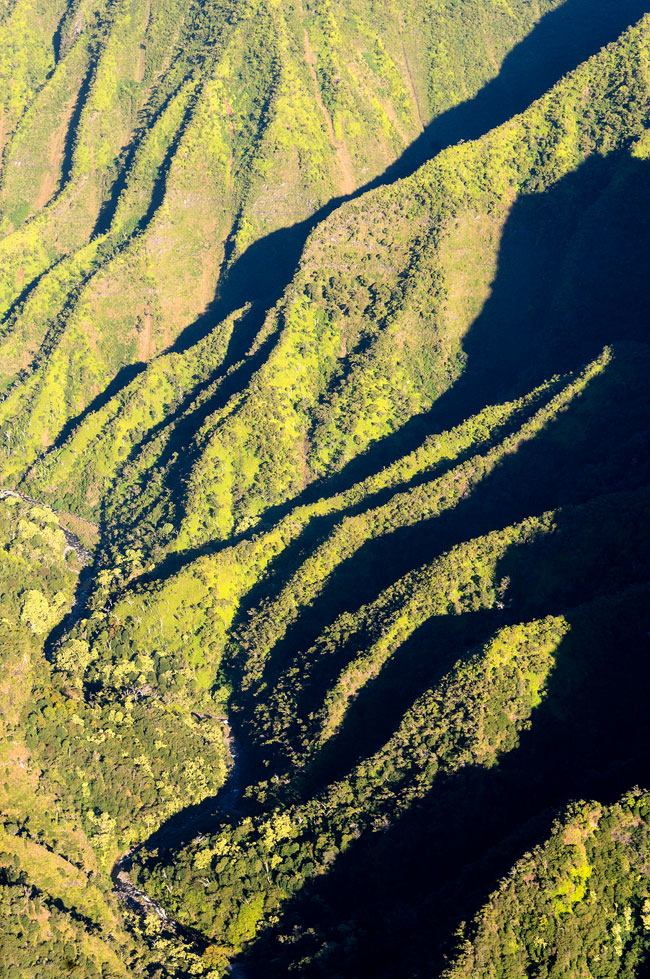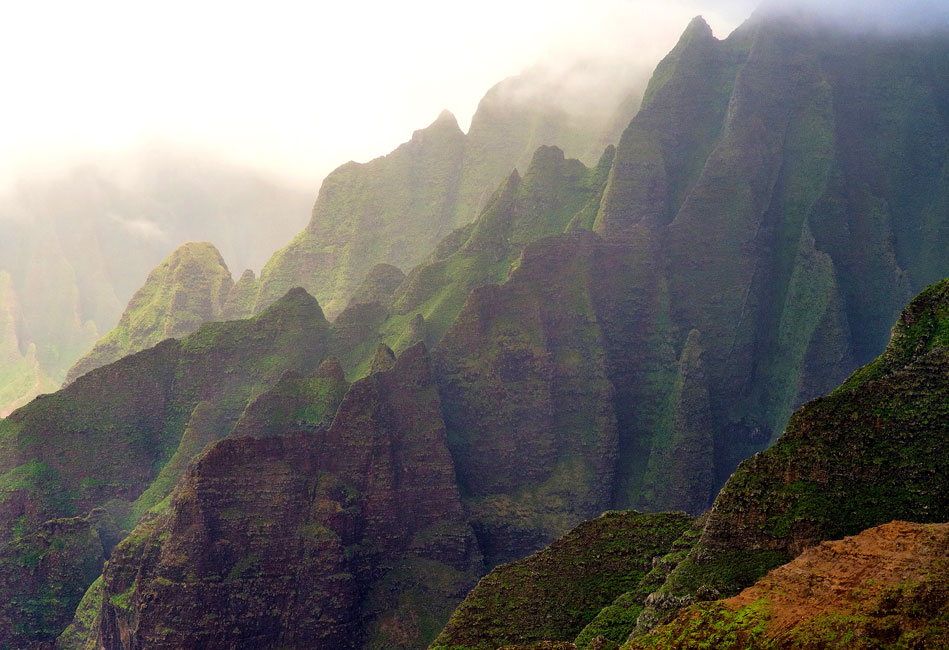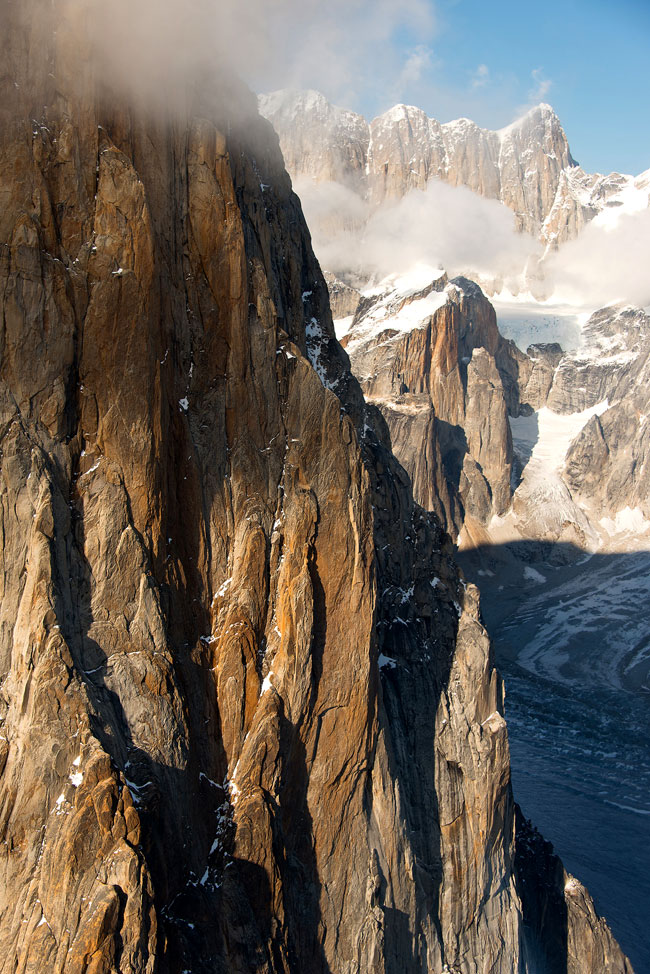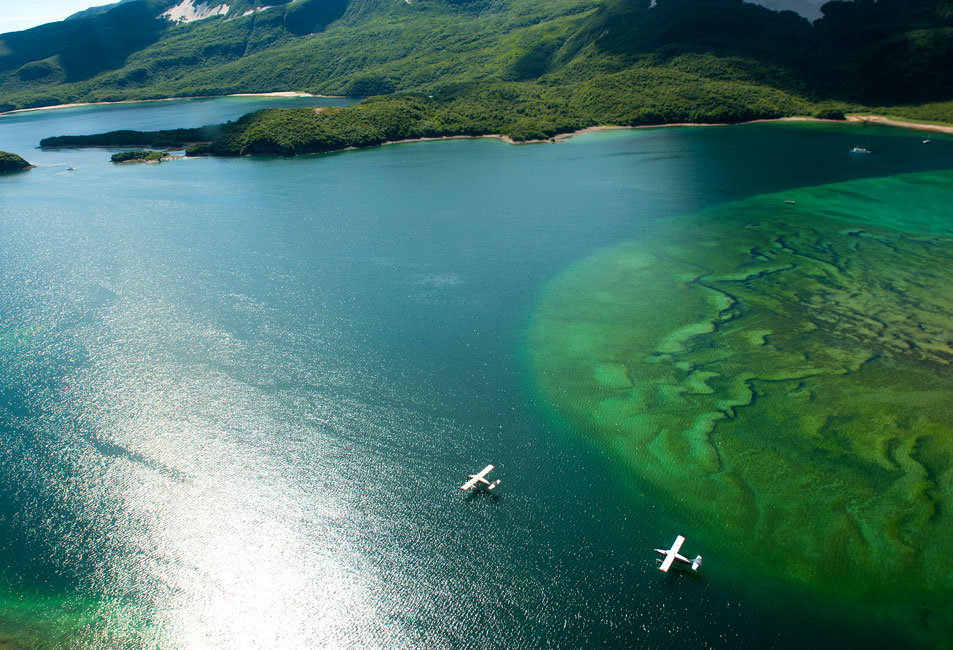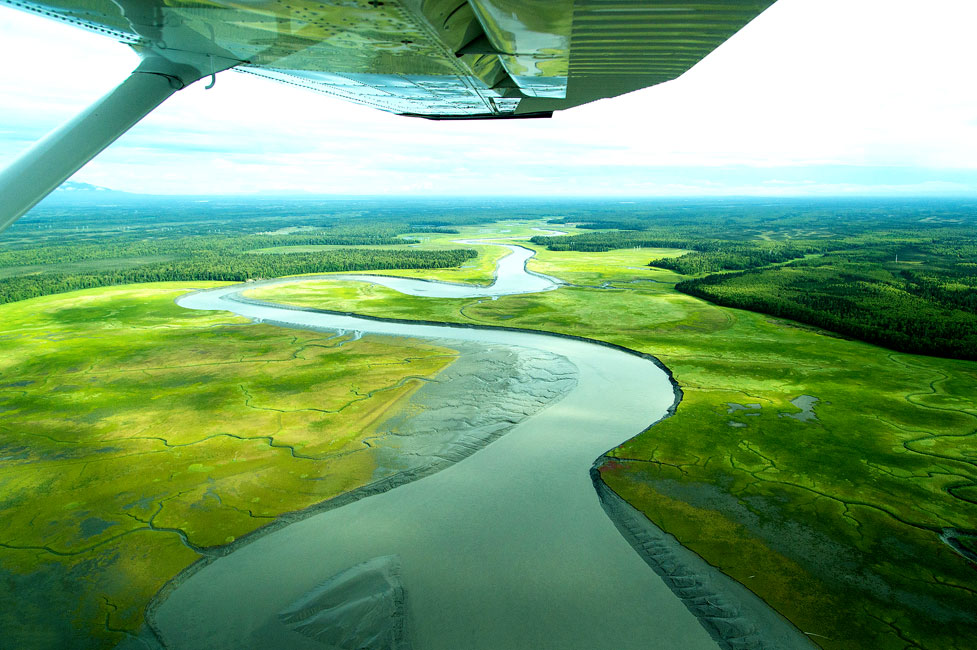Tips and Techniques For High Flying Photos
You can't beat the view.
From a hot-air balloon, a scenic-tour plane or helicopter, even from the window of a commercial jet, the landscape below is not only something to behold, it's something to be captured and shared.
We got the word about how easily it can be done from outdoor and adventure photographer Tom Bol, whose very first assignments as a pro shooter involved hanging out of airplanes—but don't worry, we're not going to suggest you do that.
Aerial photography was natural for Tom in those days. He was based in Alaska, and he says flying an airplane there is like driving your SUV to the supermarket. Early on he met a lot of pilots and got a quick education in what to do and what to avoid if he wanted great results from on high. Over the years he's continued to make aerial images for work and for fun.
If you see an aerial tour or simply a flight in a commercial jet in your future, here's what we learned from Tom's experiences and expertise.
Only the Essentials
Figure on one camera and one lens, fresh batteries and a large-capacity memory card. The view from a small plane and a helicopter is going to be changing rapidly, less so from a balloon and a jet, but in all cases you don't want to miss anything as you switch or replace lenses, cards or batteries; and you certainly don't want anything slipping out of your hand.
Any Nikon DSLR will do the job for you. Tom's shot aerials with a variety of Nikon cameras, from the film SLRs of the old days to his current DSLRs. A key choice is the lens. "If I had to choose just one," Tom says, "it would be the 24-120mm [AF-S NIKKOR 24-120mm f/4G ED VR]. It's got enough of a tele reach to zoom in, and it's wide enough to back out for the big scenes. It also has VR [Vibration Reduction]—very handy in any kind of aerial situation." Other lenses he's successfully called into play for aerials include the AF-S NIKKOR 28-300mm f/3.5-5.6G ED VR, the AF-S NIKKOR 70-200mm f/2.8G ED VR II and the AF-S NIKKOR 24-70mm f/2.8G ED.
Got a COOLPIX or a Nikon 1 Series camera? If it's got a long-ranging zoom, it will do just fine. Just remember the fresh batteries and a high-capacity card.
Doors On or Off?
A pro shooter chartering a plane or a helicopter may well get to decide. You might, too, but chances are the doors will be on when you're taking your sightseeing ride.
"If the door's are off, you're eliminating an issue with how clear the glass is," Tom says, "and you won't be confined to the window area for your view." You'll have a great view, but there'll be a strong wind—potentially up to a hundred miles an hour in the case of a small plane—blowing into the cabin. "I learned right away from the pilots to never have a lens hood on when I'm shooting doors off. It'll be ripped off the moment I stick the lens out there."
Doors on is a much more likely circumstance, and probably a better idea. "It's generally hard for the average person to get a doors-off situation," Tom says. "Some pilots won't trust a tourist to be able to handle it, and it can double the price of the ride. A pro stands a better chance, especially one who's done doors-off shooting before and who can answer the 'Who are you shooting for?' credential question."
The key to the best doors-on images is to get as close to the glass (actually it'll be some form of Plexiglas) as possible without actually touching the surface with your lens; If you touch it, you'll pick up the vibrations of the aircraft. Shooting through it shouldn't be a problem, as you can pretty much count on tourist-tour planes and helicopters to have very clean, very clear glass.
Commercial flights are another story. With photography in mind, you're going to have to book a window seat, but requesting one next to a clean, scratch-free window will probably be met with laughter rather than success. "Get as close as you can to the window without touching it," Tom says, "and shoot with the lens fairly wide open and focus just short of infinity, and unless it's a really bad scratch, you won't see the effect of the window. It's kind of like shooting through a chain link fence at a zoo. And if all else fails, there's always Photoshop later on."
The best tip when shooting through glass in any aircraft has to do with what you're wearing. "If you're wearing light colored clothing, the chances of reflections in the glass are much higher than if you wear dark, or all black, clothing," Tom says. "Anytime I do aerials, I wear dark clothes."
Over Kauai, Hawaii, in a helicopter. "A doors-on shot," Tom says. "The pilots who fly sightseeing and business-related flights keep their windows clean and pretty much scratch-free." D4, AF-S NIKKOR 24-120mm f/4G ED VR, 1/1600 second, f/5.6, ISO 1000, aperture priority, Matrix metering.
Where to Sit
On a commercial flight, Tom chooses a seat toward the front of the plane so he never has to deal with the wing in the photo. "The flip side of that is sometimes images with the wing are kind of interesting," he says. "They set the scene and the tone of the photos. But from a forward seat I can always turn toward the back and get part of the wing in the photo, and it always looks better to be seeing the front edge of the wing rather than the back."
Most of the small planes in which he flies have the wing above the fuselage, but the photo can work either way. "Sometimes the wing is an interesting scene-setting graphic; other times you don't want it distracting from what you're shooting."
What to Set
You'll see from Tom's accompanying photos that he prefers shutter speeds higher than 1/500 second, sometimes considerably higher. And he'll often boost his ISO setting to make sure he gets that speed. "Today's cameras are terrific at higher ISOs, and there's no reason not to raise the setting to be sure you've got the shutter speed for sharp shots."
Speed is what you're looking for, depth of field not so much. "Aerial photography isn't about tremendous depth of field," Tom says. "Most times you're not going to need f/16. I shoot somewhere around f/5.6 for many of my aerials."
He also advises that you set your cameras to continuous shooting. You're going to see a lot that you want to capture, "and it's not the time to hold back."
So, is it going to be autofocus or manual focus? Tom started out with manual, but is now about 80 percent AF. "Most of the time it works just fine," he says, "and it's faster, but there are times in low light or with scratched glass that I'll switch to manual." In general he suggests AF unless the lens starts to hunt—that is, intermittently or constantly searching for focus. For manual focus he finds that backing off the infinity setting of the lens just a bit works best. "And you'll always get focus confirmation in the viewfinder."
What Not to Do
Flight attendants and pilots on commercial flights have the right to tell you not to photograph, but chances are they won't say anything if you're shooting out the window. Photographing other passengers has been known to be a problem. And keep your camera safely stowed away for takeoffs and landings. Tom's never had a problem; he finds flight attendants are happy seeing someone enjoying the opportunity to take pictures, but that doesn't mean he—and you—shouldn't be alert, aware and always follow instructions.
While it's a good idea to check the LCD to make sure your exposure and focus are on target, once you've checked it, unless there's a big change in the light, don't do any more checking, especially in the fast-moving environment of a small plane or a helicopter. "In the air is not the place to chimp," Tom says. "In the seconds it takes to review a shot, you've missed a shot, maybe an amazing shot." So if the exposure and focus are good, stay with the viewfinder to make the most of the aerial opportunity.
Finally, don't get discouraged. In aerial shooting there are going to be far more deletes than keepers. "There are so many variables: reflections, vibrations, the plane banks at the wrong moment," Tom says. "After an hour's flight, if I have five, seven, maybe sometimes 10 winners, wow, that's totally worth it!"
Flight Plan Recap:
-
As close to the glass as you can get without touching it.
-
Dark-colored clothes to reduce reflections.
-
At least 1/500 second, at or around f/5.6.
-
Continuous shooting; AF for most shots.
-
No chimping after initial checking.
-
Their aircraft, their rules.

